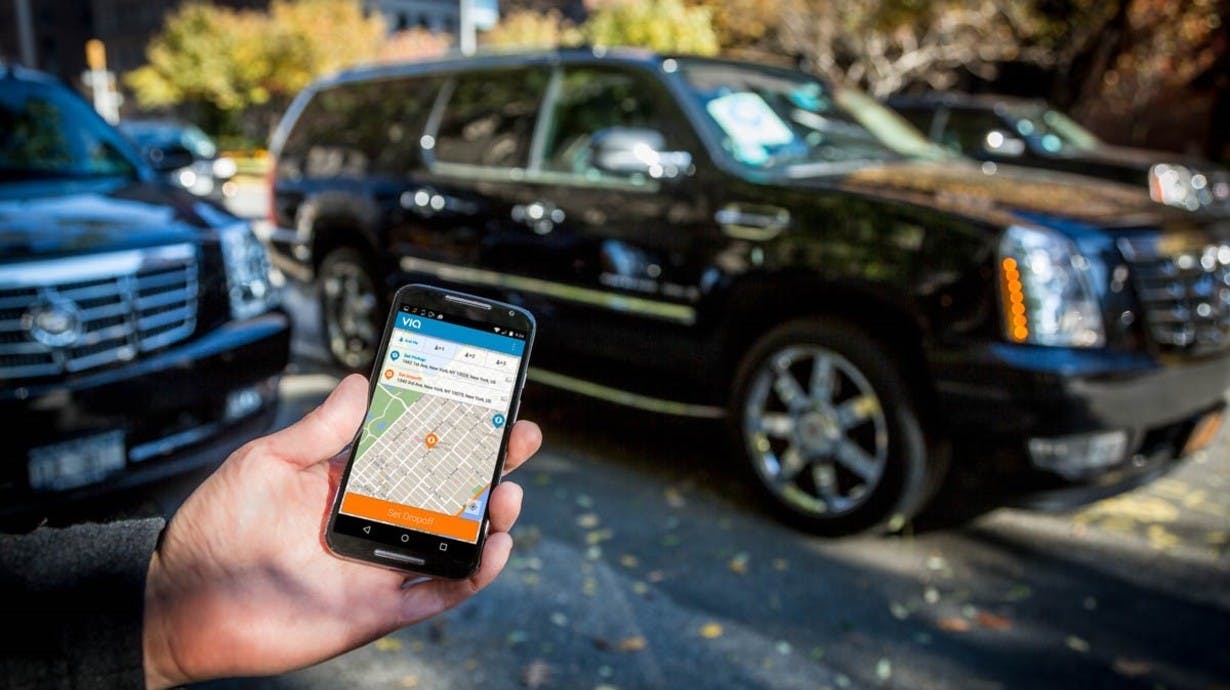How Via uses Radar Geofences to reduce rider wait time
Learn how the Growth Team at Via uses Radar geofences and mParticle to improve the user experience and wait time by homing in on user location.

At Via, an on-demand ride-sharing app based in NYC, our Growth Team relies heavily on location data to enhance experiences for our riders and drivers, while also improving system efficiency.
One of our most recent growth initiatives at Via was to understand where and when people are booking rides. We wanted to use this information to potentially reduce the wait time for riders by ensuring drivers are in high-demand places at the right time.
We use mParticle to collect behavioral app event data, such as time and location, from our iOS and Android apps and connect it to 7 different services. Radar – our location provider – directly integrates with mParticle, allowing us to instantly stream location data points to and from Radar without having to install an additional SDK, or waste our engineering team’s time building a custom integration.
Radar geofences
In order to identify high-demand places and times, we needed to capture event data from our iOS and Android apps, turn that data into meaningful locations and send it to Redshift. This sort of data flow would have taken our engineers and data scientists months to build, stealing valuable time away from actually improving the app. Luckily, with mParticle we were able to connect our data in a matter of minutes, leaving our team to focus on the task at hand: improving the user experience.
Here’s a quick look into how our process works with mParticle and Radar:
- User calls for a ride;
- A superset of events, including location data (e.g. longitude/latitude coordinates) are captured using the mParticle SDK;
- Data is sent in real-time from the mParticle platform to Radar;
- Radar adds location context using features such as Geofences, which determine when a user is in a certain area, such as an airport, and Insights, used to exclude users from receiving an irrelevant promotion;
- The data is automatically fed back to the mParticle platform in real-time using mParticle Feeds.
- Within the mParticle Platform, enriched data is instantly connected from Radar to Redshift for further analysis
All we had to do was set up the connections with a few clicks, then sit back and watch the data stream.

The best part about using mParticle to integrate all our customer data is that we can combine location intelligence data from Radar with other data, such as user attributes, time and preferences, directly within Redshift. In this way, we can perform analysis on a unified set of data to understand where and when users are booking rides. For example, we discovered that riders often start the booking process a few minutes before they are actually ready to leave. From this insight, we developed our “Second Proposal” which provides an immediate option and another that would arrive a few minutes later.
In the near future, we have plans to roll out even more location data-driven marketing programs, such as real-time push notifications. We’re confident mParticle has us covered.
**Via does not sell or share this data for third-party marketing purposes, consistent with Via’s Privacy Policy, but instead only use it to improve the quality of the service.


